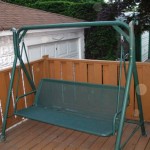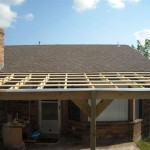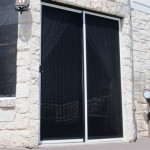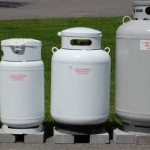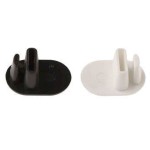Are Pavers Good For Patios? A Comprehensive Look
The question of whether pavers are a good choice for patios is a frequent one among homeowners planning outdoor renovations or new construction. Patios serve as extensions of living spaces, providing areas for relaxation, entertainment, and outdoor dining. Selecting the right material is crucial for creating a durable, aesthetically pleasing, and functional space. Pavers, constructed from various materials, including concrete, brick, and natural stone, offer several advantages and considerations. This article provides a detailed examination of the benefits and potential drawbacks of using pavers for patios, allowing for an informed decision-making process.
Durability and Longevity
One of the most significant factors to consider when choosing patio materials is durability. Pavers, particularly those made of concrete or natural stone, are known for their ability to withstand heavy foot traffic, extreme weather conditions, and general wear and tear. Unlike poured concrete, which is susceptible to cracking over time due to temperature fluctuations and ground movement, pavers are installed individually. This allows for slight shifts and movements without compromising the structural integrity of the patio. The interlocking nature of paver installations further contributes to their stability.
Concrete pavers, for instance, are manufactured using a high-strength mix that undergoes rigorous quality control. This results in a product that is resistant to chipping, fading, and staining. Natural stone pavers, such as flagstone, travertine, and slate, are inherently durable, having been formed over millennia. The specific type of stone will influence its resilience, with some being more porous and requiring more maintenance than others. However, when properly sealed and maintained, natural stone pavers can last for decades, enhancing the value and appeal of a property.
The longevity of a paver patio also depends on the quality of the installation. Proper site preparation, including the creation of a stable base of compacted gravel and sand, is essential. This base provides a level surface and allows for adequate drainage, preventing water from accumulating beneath the pavers and causing shifting or heaving. Using edging restraints along the perimeter of the patio helps to keep the pavers in place and prevents them from spreading over time. A well-installed paver patio can easily last for 20 to 30 years or more, making it a cost-effective investment in the long run.
Furthermore, the resistance to settling differentiates pavers from alternatives like poured concrete. If a section of the paver patio shifts due to ground movement, or experiences damage, individual pavers can be easily replaced without the need to demolish and reconstruct the entire surface. This ease of repair contributes significantly to the long-term value and practicality of paver patios.
Aesthetic Versatility and Design Options
Pavers offer a wide range of aesthetic options, making them suitable for various architectural styles and landscape designs. They are available in a multitude of shapes, sizes, colors, and textures, allowing homeowners to create unique and personalized patio designs. Concrete pavers can be manufactured to mimic the look of natural stone, brick, or even cobblestone, providing the desired aesthetic at a potentially lower cost. Natural stone pavers offer a unique and authentic look, with variations in color and texture that add character and charm to the patio.
The design possibilities with pavers are virtually limitless. They can be laid in various patterns, such as herringbone, basket weave, running bond, or custom designs. Different paver shapes and sizes can be combined to create intricate and visually appealing patterns. Borders and accents can be added to define the patio area and enhance its overall appearance. The versatility of pavers allows for seamless integration with existing landscaping features, such as gardens, walkways, and pool areas.
The color of pavers is another important consideration. Lighter-colored pavers can help to reflect sunlight and keep the patio cooler in warm climates. Darker-colored pavers can absorb heat and provide a warmer surface in cooler climates. Color choices also depend on the overall design aesthetic. Neutral colors, such as gray, beige, and brown, are versatile and complement a wide range of architectural styles. Brighter colors, such as red, blue, and green, can add a pop of personality and create a more vibrant outdoor space.
Beyond color and pattern, the texture of pavers adds another dimension to the design. Smooth pavers are ideal for areas where comfort is a priority, such as seating areas and walkways. Textured pavers offer better traction and are suitable for areas that may be wet or slippery, such as pool decks and outdoor kitchens. The choice of texture also influences the overall aesthetic of the patio, with rougher textures conveying a more rustic and natural look, while smoother textures create a more modern and refined appearance.
The aesthetic versatility of pavers extends to their ability to complement different architectural styles. For traditional homes, brick or cobblestone pavers can create a classic and timeless look. For modern homes, concrete pavers with clean lines and geometric patterns can provide a sleek and contemporary aesthetic. Natural stone pavers can blend seamlessly with more rustic or natural landscapes.
Maintenance and Repair
While pavers are relatively low-maintenance, some routine care is required to keep them looking their best and to extend their lifespan. Regular sweeping or blowing removes dirt, leaves, and debris that can stain the pavers over time. Periodic washing with a mild detergent and water helps to remove any stubborn stains or grime. Power washing can be used for more thorough cleaning, but it is important to use a low-pressure setting to avoid damaging the pavers or loosening the joint sand.
Joint sand, the material that fills the gaps between pavers, plays a crucial role in maintaining the stability and integrity of the patio. Over time, joint sand can be washed away by rain or blown away by wind, leaving the pavers vulnerable to shifting and settling. Replenishing the joint sand is an important part of paver patio maintenance. Polymeric sand, a type of joint sand that hardens when wetted, offers superior resistance to erosion and weed growth. Applying a sealant to the pavers can also help to protect them from staining, fading, and water damage. Sealants can be applied every few years, depending on the type of sealant and the level of exposure to the elements.
One of the key advantages of paver patios is the ease of repair. If a paver becomes cracked or damaged, it can be easily removed and replaced without disturbing the surrounding pavers. This is a significant advantage over poured concrete, which requires more extensive and costly repairs when cracks occur. Replacing a paver is a simple process that can be done by a homeowner with basic tools and skills. Matching the color and texture of the replacement paver to the existing pavers is important to ensure a seamless repair.
Weed growth between pavers is a common concern for homeowners. Regular weeding can help to prevent weed infestations. Applying a pre-emergent herbicide can also help to prevent weed seeds from germinating. Polymeric sand can help to inhibit weed growth by creating a barrier that prevents weeds from taking root. In some cases, a more aggressive approach, such as using a weed torch or applying a post-emergent herbicide, may be necessary to control persistent weed problems.
In colder climates, pavers may be susceptible to damage from freeze-thaw cycles. Water that penetrates the pavers can freeze and expand, causing the pavers to crack or crumble. Using de-icing salts on paver patios can also contribute to damage, as the salts can corrode the pavers and exacerbate the effects of freeze-thaw cycles. Choosing pavers that are specifically designed for cold climates and applying a sealant can help to protect them from freeze-thaw damage. Using alternative de-icing methods, such as sand or gravel, can also help to minimize the risk of damage.
Cost Considerations
The cost of installing a paver patio can vary depending on several factors, including the type of paver material, the size of the patio, the complexity of the design, and the labor costs in the area. Concrete pavers are generally less expensive than natural stone pavers. However, the cost of concrete pavers can vary depending on the quality, color, and texture. Natural stone pavers range widely in price depending on the type of stone and its availability.
The size of the patio is a significant factor in determining the overall cost. Larger patios require more materials and labor, resulting in higher costs. The complexity of the design also affects the cost. Intricate patterns and custom designs require more time and skill to install, increasing the labor costs. Hiring a professional paver installer is generally recommended to ensure a proper installation. Professional installers have the necessary experience and equipment to prepare the site, install the pavers, and finish the project to a high standard. Labor costs can vary depending on the area and the experience of the installer.
While the initial cost of installing a paver patio may be higher than other patio materials, such as poured concrete, the long-term cost-effectiveness of pavers should be considered. Pavers are more durable and require less maintenance than poured concrete, resulting in lower long-term costs. The ease of repair and replacement also contributes to the long-term value of paver patios. Unlike poured concrete, which may require extensive repairs or replacement when cracks occur, individual pavers can be easily replaced without disrupting the entire patio.
When comparing the cost of paver patios to other patio materials, it is important to consider the total cost of ownership, including the initial cost, the maintenance costs, and the repair costs. Pavers may have a higher initial cost, but their durability and low maintenance can result in lower overall costs over the lifespan of the patio. Obtaining quotes from multiple contractors and comparing the costs of different paver materials is recommended. This allows for informed budgeting.
Furthermore, depending on the project, homeowners may be able to offset some of the cost of the paver patio by performing some of the work themselves. For example, site preparation, such as removing existing landscaping or excavating the area, can be done by the homeowner. However, it is generally recommended to leave the actual paver installation to a professional to ensure a proper and durable result. Proper installation is crucial to the long-term performance and appearance of the paver patio.

10 Tips And Tricks For Paver Patios

Upgrading The Patio Here Are Real Pros Cons Of Paver Patios Harris Landscape Construction Reno

5 Benefits Of Installing A Brick Paver Patio Mutualmaterials Com

Advantages And Disadvantages Of Both Patio Pavers Stamped Concrete

Take The Fun Outside With A Paver Patio Seattle Times

450 Best Patio With Pavers Ideas Paver Design

How To Build A Paver Patio It S Done Young House Love

The Benefits Of Concrete Pavers Over Patio Tiles Belgard

The Following Information Should Clear Up Some Misconceptions You May Have Heard About Paver Patios

Planning For A Paver Patio Ideas And Inspiration Town Country Living

